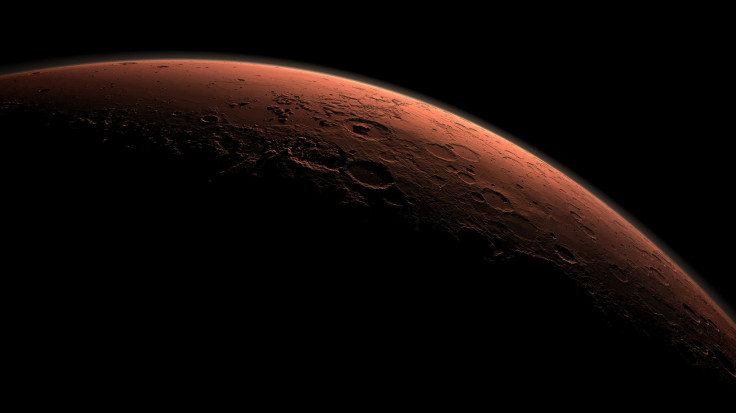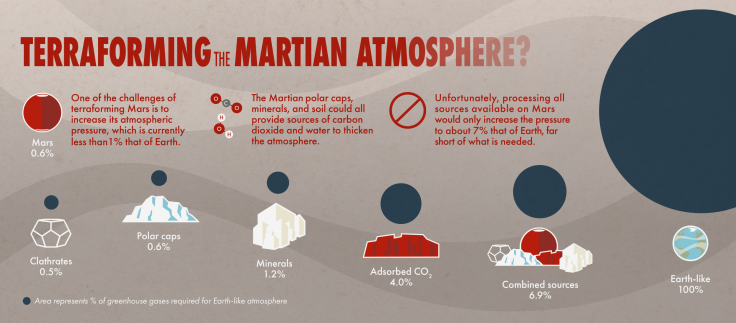Mars Colonization: NASA Says Red Planet Cannot Be Terraformed Anytime Soon

For years, scientists hoping to colonize Mars have been suggesting the idea of terraforming, where extensive ground-work on the red planet would release carbon dioxide trapped within its surface and heat the planet enough to host liquid water and make the conditions suitable to support human life for years to come.
The idea has also been driving SpaceX’s hopes of sending BFRs and making the red planet hospitable, but just recently, a new study has revealed that the conditions on Mars and our current technical know-how don’t make the situation ideal for terraforming, not at the moment at least.

Scientists have long known about the presence of carbon dioxide on Mars. It is present in the red planet’s atmosphere, but the pressure of that atmosphere is not even 1 percent of Earth’s — something that could never keep water in a liquid state.
This is where the idea of terraforming came in, with many positing that CO2 and other volatiles from the planet’s surface could thicken its atmosphere enough to bring greenhouse effect into play and heat the planet.
"Carbon dioxide (CO2) and water vapor (H2O) are the only greenhouse gases that are likely to be present on Mars in sufficient abundance to provide any significant greenhouse warming," Bruce Jakosky of the University of Colorado said in a NASA statement.
However, using data from 20 years of spacecraft observation, Jakosky and colleagues analyzed the history as well as the present-day situation of carbon dioxide and water vapor on the red planet. This, as well as the history of Martian atmosphere being lost into space, led them to posit that there is not enough CO2 to warm up Mars.
Mars is farther from the sun, which means scientists have to make its atmospheric pressure at least similar to Earth, if not more. There is significant water ice on the planet to form vapor, but that cannot work without initial warming from greenhouse gases.
While other chlorofluorocarbons or other fluorine-based heat-trapping compounds do not work on a long-run and demand large-scale manufacturing, CO2 isn’t readily accessible. The best source for the gas, as the researchers described, are polar ice caps.
However, according to the study, even if we manage to use thermonuclear explosions or any other technique to extract CO2 from ice caps, the atmospheric pressure of the planet would go only up to 1.2 percent of Earth’s.
The best Mars could offer, as per their analysis, was nearly 7 percent of what is required to making conditions hospitable. This could be achieved by employing energy and resource-consuming techniques to extract carbon from sources such as dust particles in Martian soil and subsurface mineral deposits.
“Our results suggest that there is not enough CO2 remaining on Mars to provide significant greenhouse warming were the gas to be put into the atmosphere,” Jakosky added. “In addition, most of the CO2 gas is not accessible and could not be readily mobilized. As a result, terraforming Mars is not possible using present-day technology”.
While the study holds major implications for the colonization of the red planet, the team involved in the work does note the possibility that atmospheric pressure could reach to the required level if CO2 is extracted from mineral deposits buried deep within Martian crust. Unfortunately, as of now, there is no detailed information on the scale of these deposits or how such work could be conducted without employing too much energy, as in the case of current technologies.
The study, titled "Inventory of CO2 available for terraforming Mars," was published July 30 in the journal Nature Astronomy.
© Copyright IBTimes 2024. All rights reserved.





















